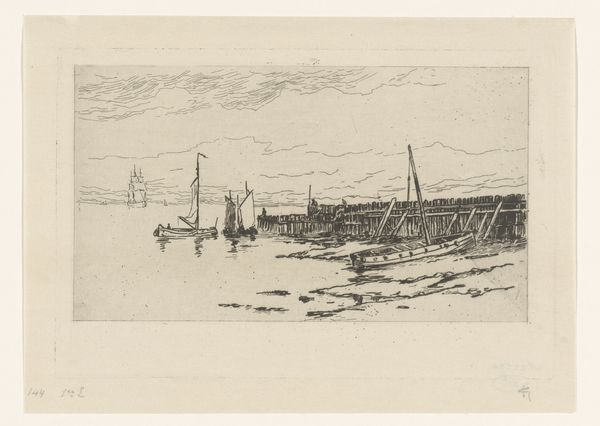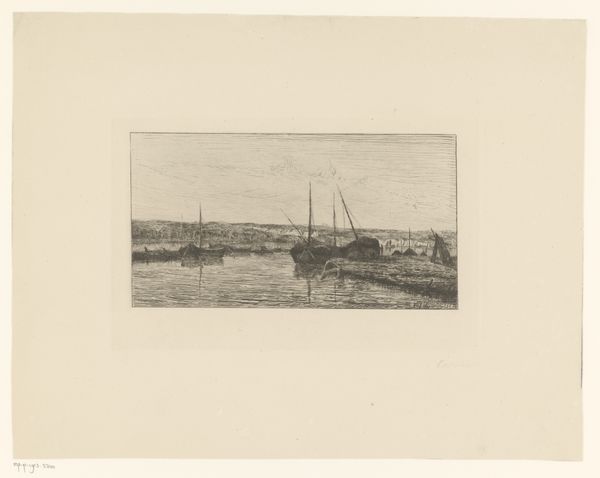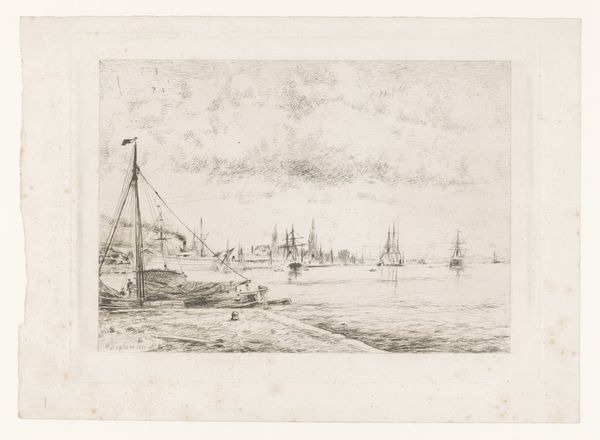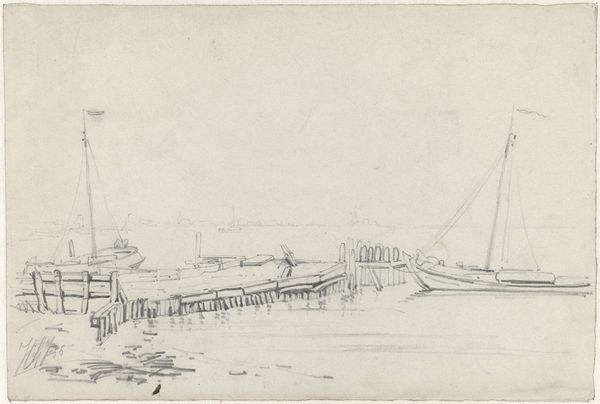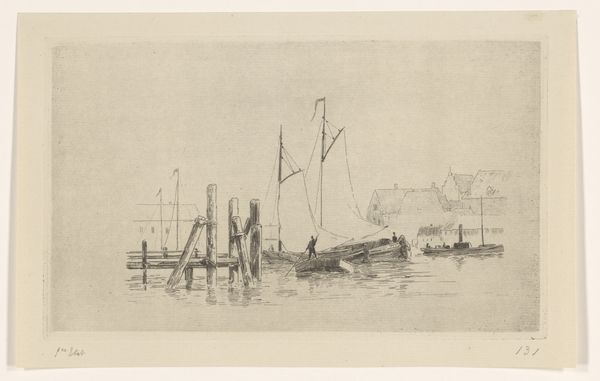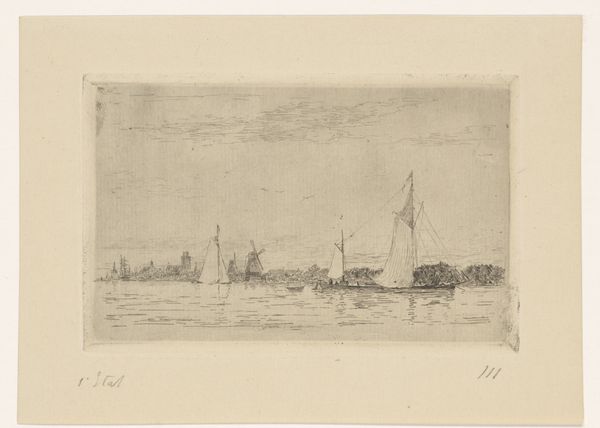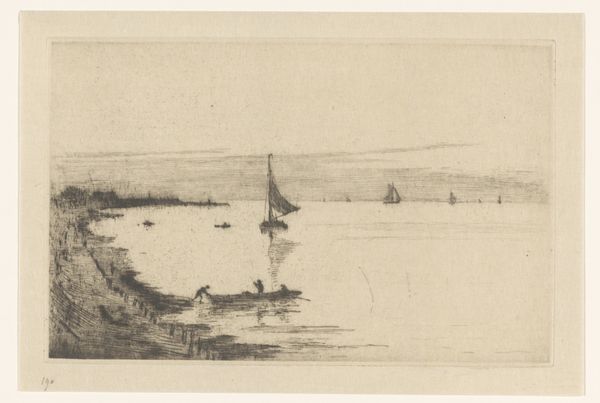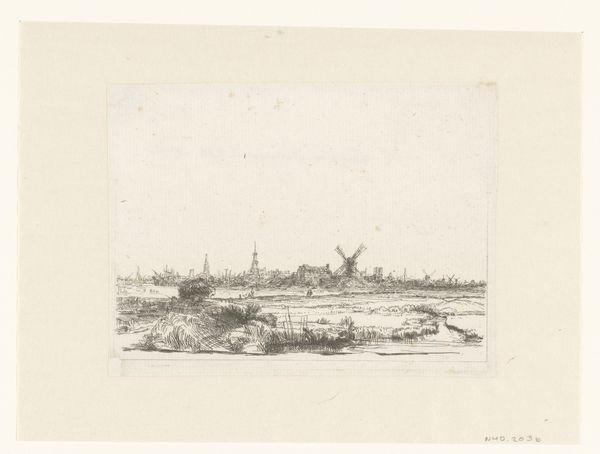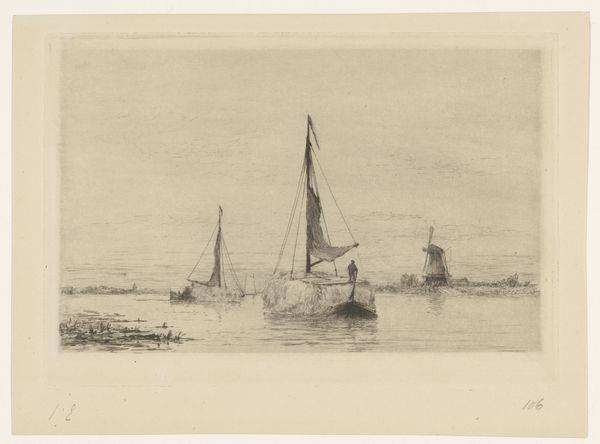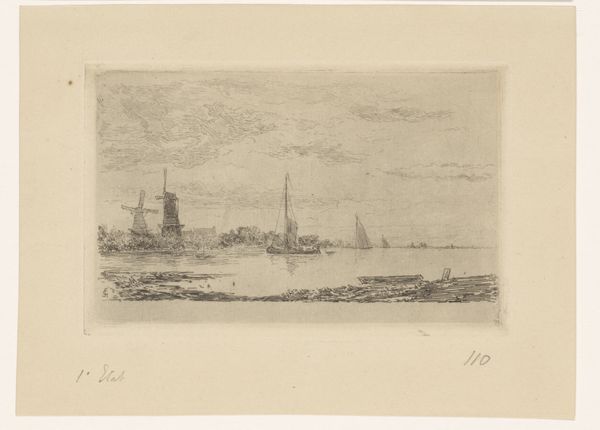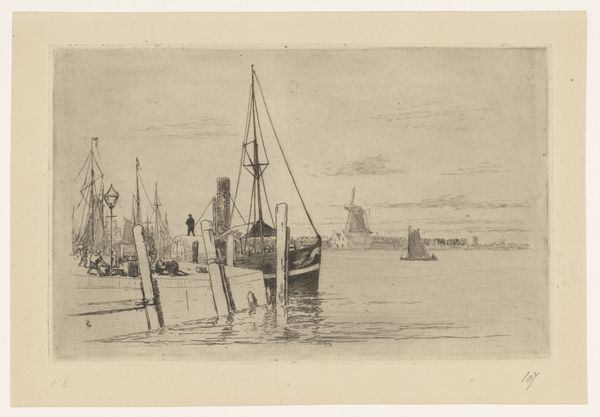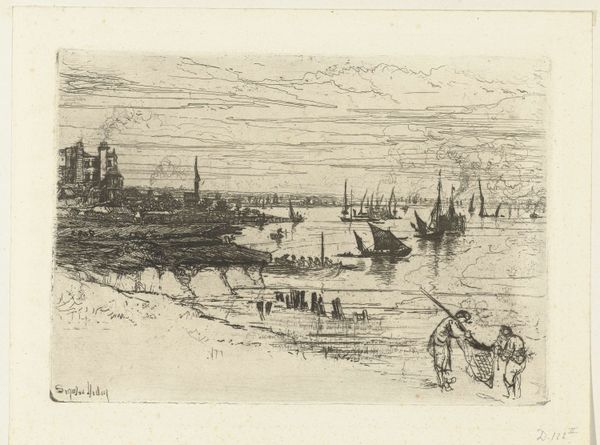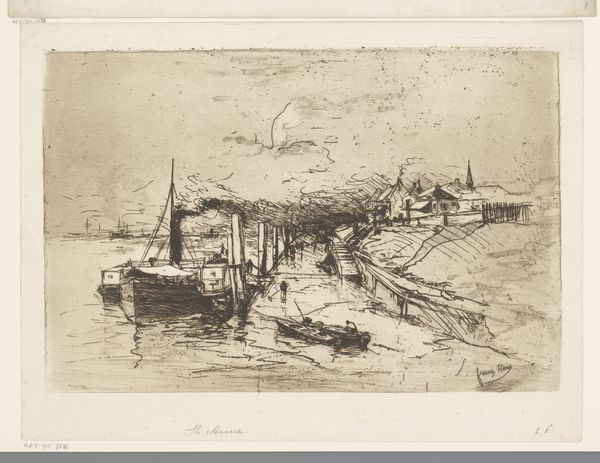
drawing, etching, paper, pencil
#
drawing
#
dutch-golden-age
#
etching
#
pencil sketch
#
landscape
#
etching
#
paper
#
pencil
#
cityscape
#
pencil work
#
realism
#
monochrome
Dimensions: height 228 mm, width 421 mm
Copyright: Rijks Museum: Open Domain
Adriaen Honich rendered this “View of a Town in the Tiber Valley” sometime in the 17th century, likely using graphite or black chalk on paper. The drawing's visual qualities, with its emphasis on line and delicate shading, largely stem from the characteristics of the material itself. Graphite, in particular, allowed Honich to achieve fine details and subtle gradations in tone, crucial for capturing the atmospheric perspective of the Tiber Valley landscape. The work's creation involved skilled hand-eye coordination, draftsmanship, and understanding of perspective. Drawing was a fundamental skill for artists, architects, and engineers alike. This particular drawing might have served as a preparatory study for a larger painting, a record of a specific location, or an independent work of art. Ultimately, understanding the materials and processes behind "View of a Town in the Tiber Valley" enriches our appreciation, prompting us to consider the labor, skill, and broader artistic context of its creation.
Comments
No comments
Be the first to comment and join the conversation on the ultimate creative platform.
